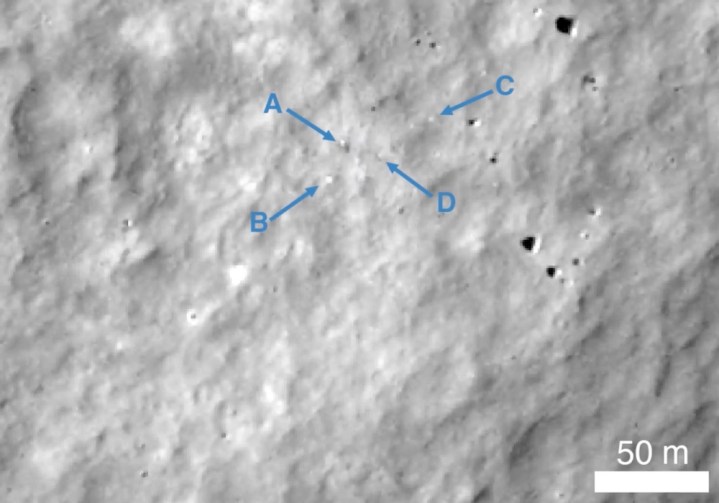NASA has released new images that appear to show the broken remains of Japan’s Hakuto lander, which crashed on the lunar surface in a failed mission last month.
Organized by Tokyo-based lunar exploration startup ispace, the Hakuto-R Mission 1 lunar lander launched in December 2022 with the aim of becoming the first privately funded spacecraft to land and operate on the lunar surface.
But following several months in space, an anomaly occurred in the final moments before the spacecraft’s scheduled touchdown. With all contact lost, how and exactly where the lander impacted the moon wasn’t clear, but images captured recently by NASA’s Lunar Reconnaissance Orbiter (LRO) appear to have shed new light on the case.
LRO captured 10 images around the planned landing site using its Narrow Angle Cameras, according to NASA. Comparing before-and-after images, a team was able to pick out what appear to be fragments of the failed Hakuto lander spread across a wide distance. NASA marked them in one of the images, shown below:

“The image shows at least four prominent pieces of debris and several small changes,” NASA said.
It added that the crash site will be analyzed in greater detail over the coming months using additional LRO images that will be captured in different lighting and viewing geometries.
The main aim of ispace’s mission was to deploy two small rovers on the lunar surface, and more broadly to demonstrate its ability to successfully put a lander on the lunar surface.
Despite the disappointing end to the endeavor, ispace said it was able to acquire valuable data for the entire mission up until the very final moment, and will use the knowledge it gained to try again with a similar mission as part of its work to advance efforts by the private sector in space development.
NASA is spending several billion dollars on contracts with private firms to develop landers capable of bringing cargo to the lunar surface as part of its Artemis program.
Editors' Recommendations
- Junk from the ISS fell on a house in the U.S., NASA confirms
- These 3 companies are developing NASA’s new moon vehicle
- Meet NASA’s trio of mini moon rovers set to launch next year
- Odysseus lunar lander sends a ‘fitting farewell transmission’ to Earth
- With Intuitive Machines’ mission cut short, when is the next lunar landing?


